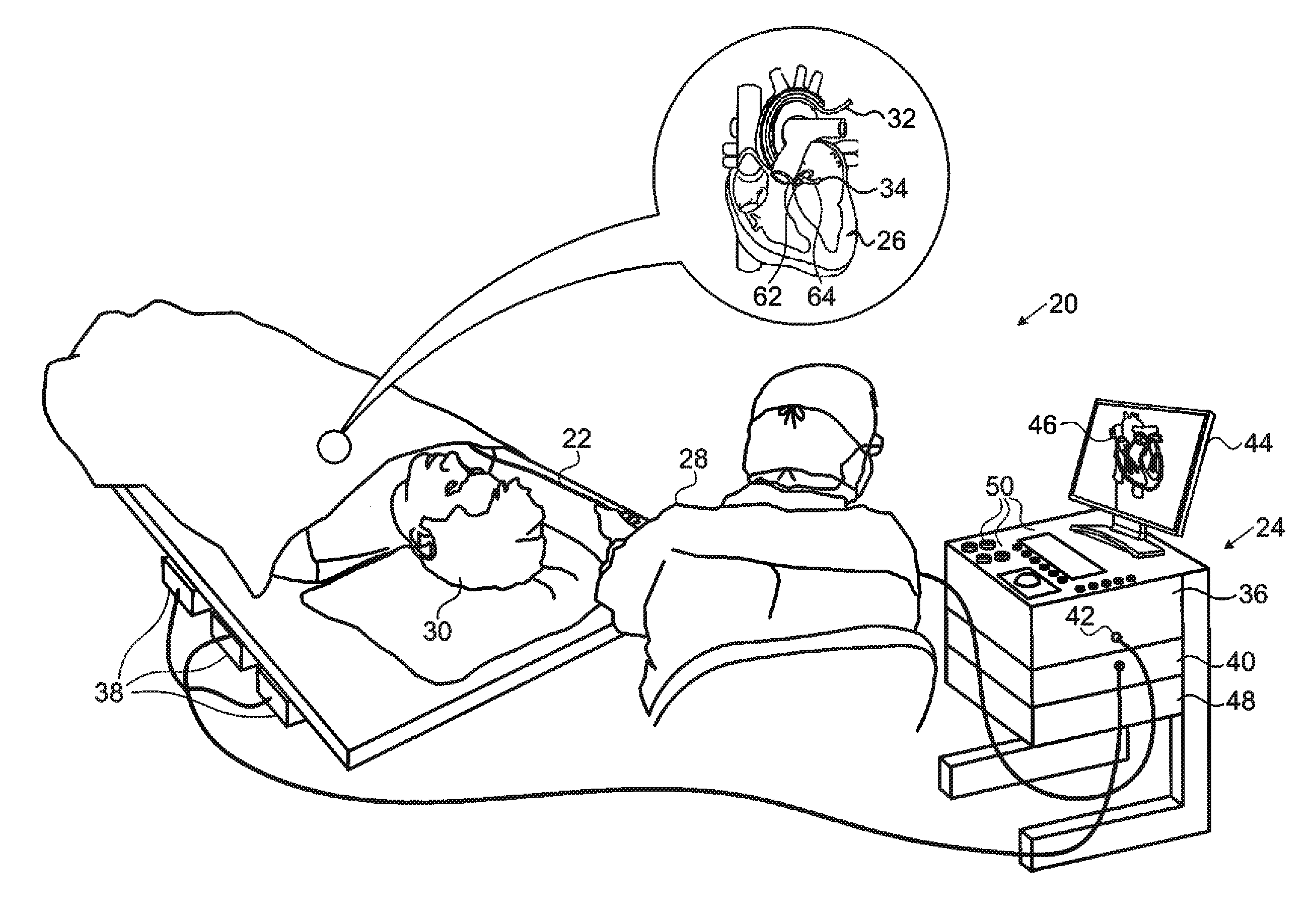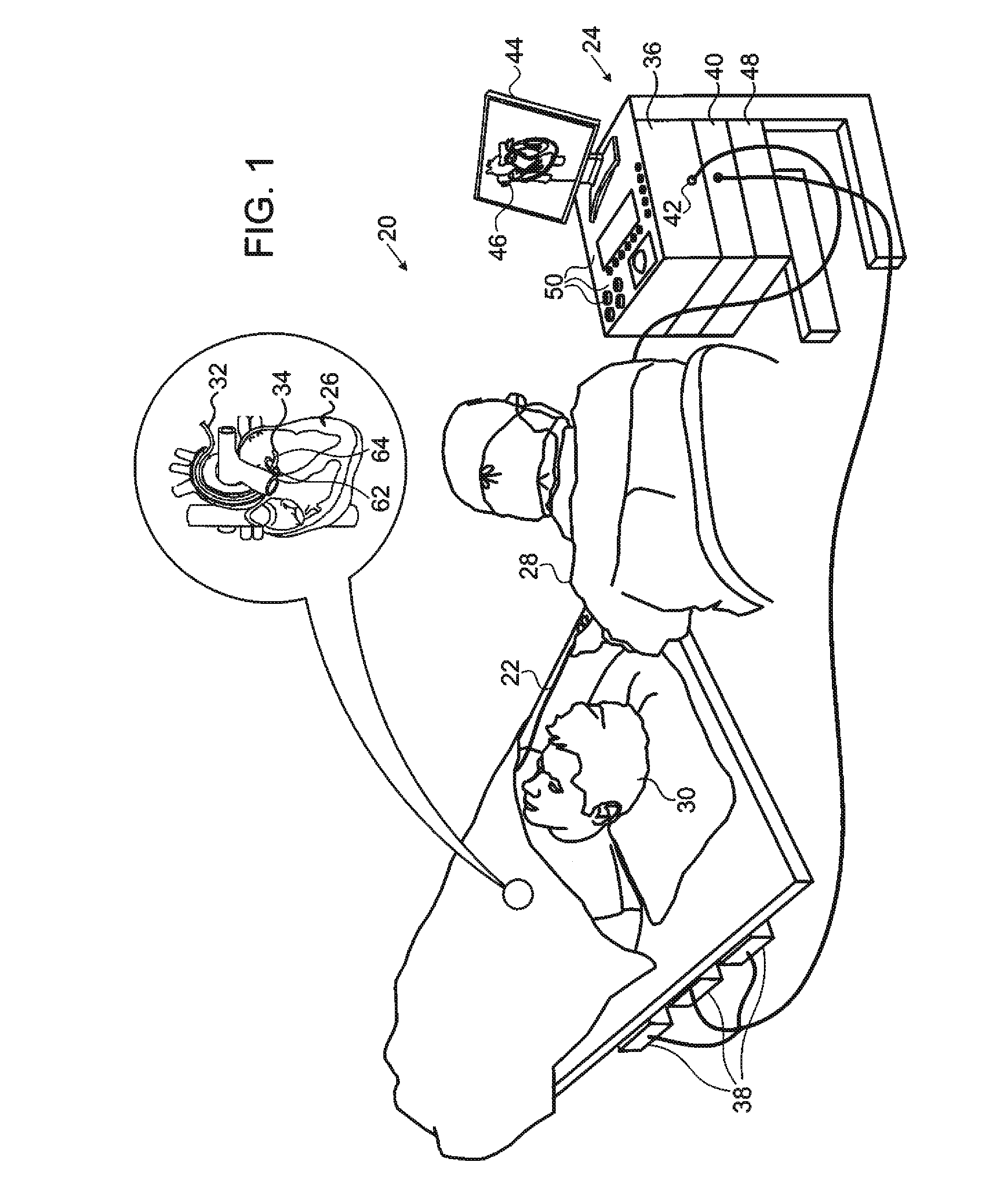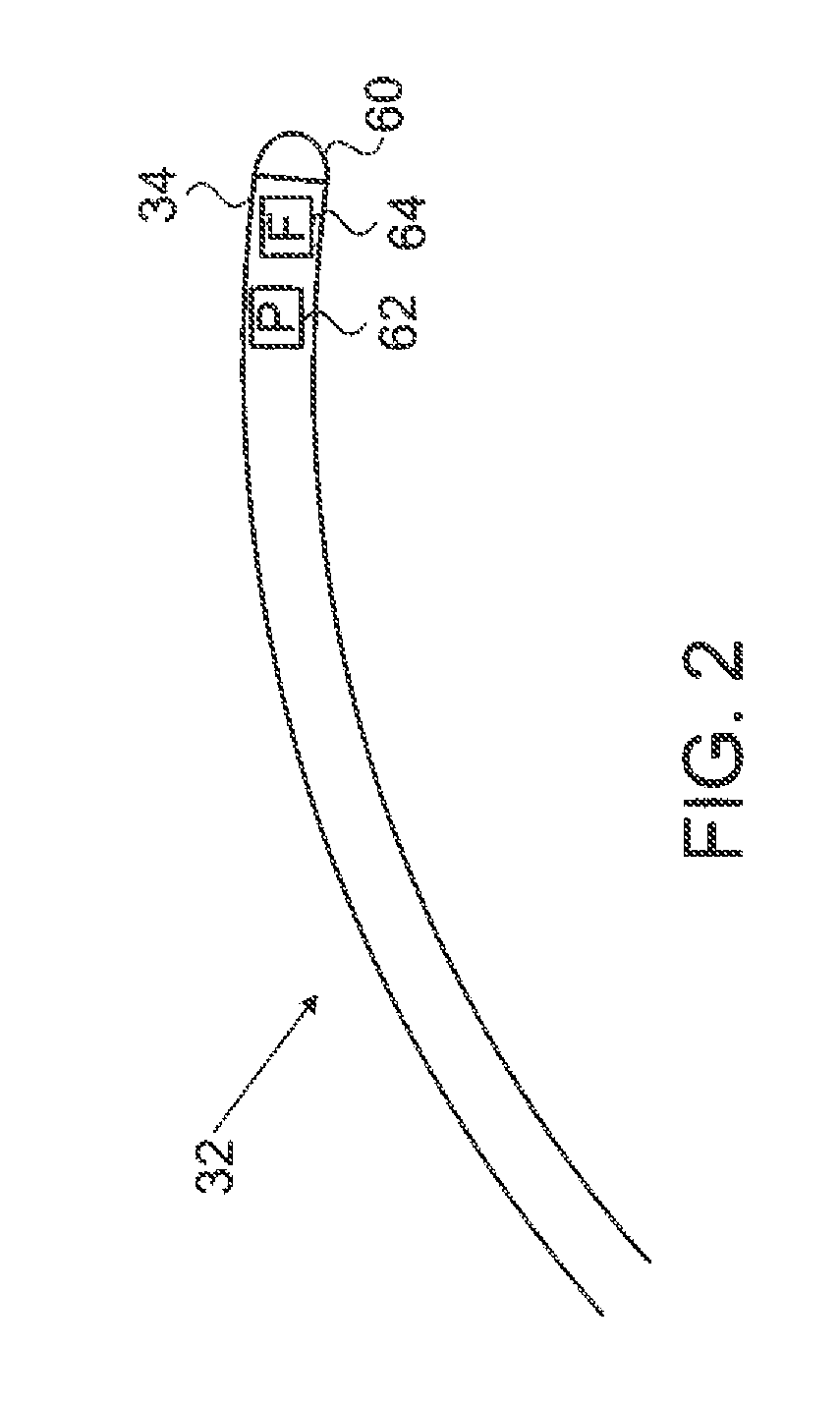In-vivo calibration of contact force-sensing catheters using auto zero zones
a force-sensing catheter and auto-zero technology, applied in the field of medical probes, can solve problems such as sudden death, cardiac arrhythmias and atrial fibrillation, and life-threatening arrhythmias
- Summary
- Abstract
- Description
- Claims
- Application Information
AI Technical Summary
Benefits of technology
Problems solved by technology
Method used
Image
Examples
Embodiment Construction
[0023]Many diagnostic and therapeutic procedures, such as cardiac ablation and intracardiac electroanatomic mapping, use a minimally invasive probe, such as a catheter, which has at least one electrode mounted on its distal tip. The electrode is typically operated when the probe is pressed against a body cavity surface, such as the endocardium in the treatment of cardiac arrhythmias. It is important to the user of the catheter or probe, such as the electro-physiologist, to know that there is contact between the catheter and the tissue and to know the amount of force the catheter is asserting on the tissue. Newer force-sensing catheters provide such force measurement feedback to the user.
[0024]To accurately measure a force exerted by the distal tip on the endocardium, the force sensor is typically calibrated during manufacture to produce a reading of zero grams of force when there is no contact between the catheter and another object such as the tissue. Once this calibration is done,...
PUM
 Login to View More
Login to View More Abstract
Description
Claims
Application Information
 Login to View More
Login to View More - R&D
- Intellectual Property
- Life Sciences
- Materials
- Tech Scout
- Unparalleled Data Quality
- Higher Quality Content
- 60% Fewer Hallucinations
Browse by: Latest US Patents, China's latest patents, Technical Efficacy Thesaurus, Application Domain, Technology Topic, Popular Technical Reports.
© 2025 PatSnap. All rights reserved.Legal|Privacy policy|Modern Slavery Act Transparency Statement|Sitemap|About US| Contact US: help@patsnap.com



